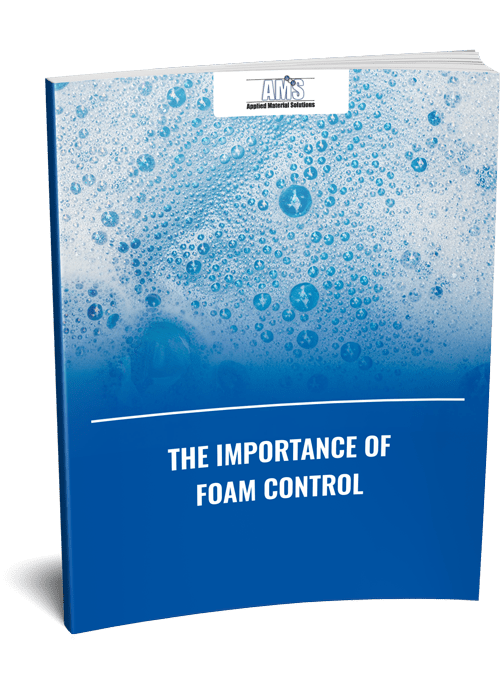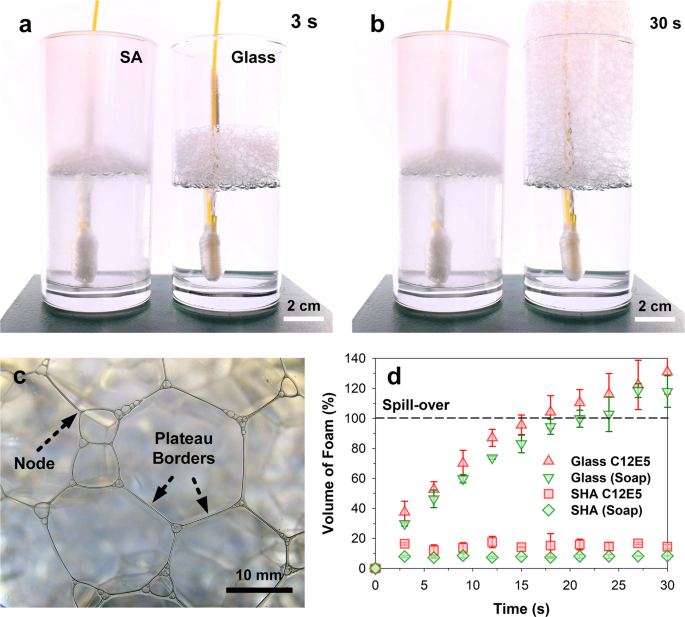Anti-Foam Control Solutions-- Reduce Foam Build-up with Specialized Products
How Anti-Foam Control Solutions Enhance Item High Quality and Efficiency
The duty of anti-foam control services in commercial procedures can not be overstated, as they are crucial in improving both item high quality and operational effectiveness. By effectively mitigating foam development, these services not just guarantee consistent product appearance across numerous markets yet likewise reduce the danger of contamination, which is essential for keeping high pureness requirements. Their impact on lowering and streamlining operations downtime elevates important concerns regarding the option and application of these agents. When selecting the appropriate anti-foam solution for your distinct operational requirements?, what certain variables should be considered.
Recognizing Foam Development
Foam development is a typical phenomenon experienced in various industrial procedures, usually arising from the communication of liquids with gases or solids. This phenomenon takes place as a result of the stablizing of gas bubbles within a liquid matrix, resulting in the creation of a foamy layer externally. The existence of surfactants, which decrease the surface area stress of liquids, can exacerbate foam development by promoting bubble formation and stabilization.
Numerous aspects influence foam development, consisting of the nature of the liquid, the presence of contaminations, temperature, and agitation degrees. As an example, high shear forces throughout mixing can present a lot more air into the fluid, promoting bubble development. Additionally, hydrophobic and hydrophilic compounds can interact with liquid surface areas, impacting bubble security.
Comprehending the devices of foam development is essential for sectors such as food processing, drugs, and petrochemicals, where foam can impede manufacturing effectiveness and modify product top quality. Identifying the details conditions that bring about foam generation enables far better design and control of procedures, inevitably resulting in boosted operational results. Recognizing these basic aspects of foam formation establishes the stage for checking out reliable solutions to alleviate its damaging effects in commercial applications.

Significance of Anti-Foam Solutions
While foam development can enhance particular processes, its unexpected visibility typically leads to substantial operational difficulties throughout various markets. In production, for instance, excessive foam can impede the exact measurement of liquids, leading to variances in item formulation.

The value of anti-foam services extends past functional effectiveness; they additionally play an essential function in maintaining security criteria. In industries such as food and beverage processing, where health is paramount, managing foam can protect against contamination risks related to overflow and splilling. Ultimately, the implementation of anti-foam options is essential for enhancing manufacturing processes, securing equipment, and making certain compliance with industry guidelines. Their duty is vital in advertising overall functional quality across diverse markets.
Advantages to Item High Quality
Efficient anti-foam options dramatically boost item top quality throughout different markets by making sure constant formulation and avoiding the introduction of impurities. The visibility of foam throughout manufacturing processes can lead to variability in item attributes, which see post eventually impacts the end customer's experience. By minimizing foam development, these services help with consistent blending and dispersion of ingredients, causing an item that satisfies stringent top quality criteria.
Furthermore, anti-foam agents aid preserve optimal thickness and structure, which are essential for items such as finishes, food, and pharmaceuticals. Anti-Foam Control Solutions. A secure formula is not only cosmetically attractive but likewise functionally exceptional, making certain that items perform as planned. Furthermore, the decrease of foam reduces the threat of contamination, as caught air can present unwanted microbes or foreign fragments that jeopardize item stability
In applications like fermentation or chemical reactions, efficient anti-foam solutions sustain optimum yield and item consistency, which are crucial for maintaining brand name reputation and client complete satisfaction. By focusing on product high quality, makers can foster depend on and loyalty among consumers, eventually adding to long-term success in the marketplace.
Enhancing Functional Efficiency
A substantial decrease in foam can find out result in improved functional efficiency in producing procedures throughout various industries. When foam is lessened, it enables smoother operations, thus minimizing downtime related to foam-related issues. Extreme foam can trigger overflow, interfere with equipment functionality, and require regular upkeep treatments, every one of which add to inefficiencies and enhanced operational expenses.
By applying effective anti-foam control remedies, producers can streamline their processes, her explanation causing enhanced throughput and performance. The reduction of foam promotes better blending and reaction times in chemical processes, which is essential in markets such as food manufacturing, pharmaceuticals, and wastewater treatment. With an extra stable process atmosphere, suppliers can achieve a lot more regular item output, thus improving total operational reliability.
Furthermore, improved functional performance can lead to savings in raw materials and power intake. When foam is regulated effectively, resources are utilized better, bring about a decrease in waste and functional prices. Companies are much better placed to fulfill manufacturing targets and respond to market demands quickly, ultimately contributing to a stronger affordable benefit in the industry.
Picking the Right Anti-Foam Representative
Choosing the suitable anti-foam agent is important for maintaining the functional effectiveness gotten with effective foam control. The choice of representative can dramatically influence both the efficiency of the process and the quality of the end product. Aspects such as the nature of the foam, the processing environment, and the details application has to be thought about to guarantee optimal outcomes.
Anti-foam representatives can be categorized right into 2 primary kinds: non-silicone-based and silicone-based. Silicone representatives are understood for their premium performance in high-shear and high-temperature applications, while non-silicone agents may be preferred in sectors like food and drink because of regulatory factors to consider. It is crucial to examine the compatibility of the anti-foam agent with the products and processes entailed.
Furthermore, the focus of the anti-foam agent plays an essential duty; extreme usage can cause negative effect on product high quality, while insufficient quantities may stop working to regulate foam effectively. Conducting detailed testing and pilot tests can help determine one of the most suitable anti-foam representative for a specific application, eventually boosting both product high quality and functional efficiency.
Final Thought
In verdict, anti-foam control solutions play a crucial function in enhancing product high quality and operational efficiency across various industries. By reducing foam formation, these services guarantee consistent mixing and product appearance while minimizing contamination threats.
By properly mitigating foam development, these options not just make sure constant product texture throughout numerous markets however also minimize the risk of contamination, which is essential for keeping high pureness requirements.Understanding the mechanisms of foam development is vital for markets such as food processing, drugs, and petrochemicals, where foam can prevent production efficiency and modify item quality. The presence of foam throughout production procedures can lead to irregularity in product features, which inevitably impacts the end user's experience. By minimizing foam formation, these solutions promote uniform blending and diffusion of ingredients, resulting in an item that satisfies rigorous high quality standards.
Picking the suitable anti-foam representative is important for sustaining the operational efficiency gotten through efficient foam control.